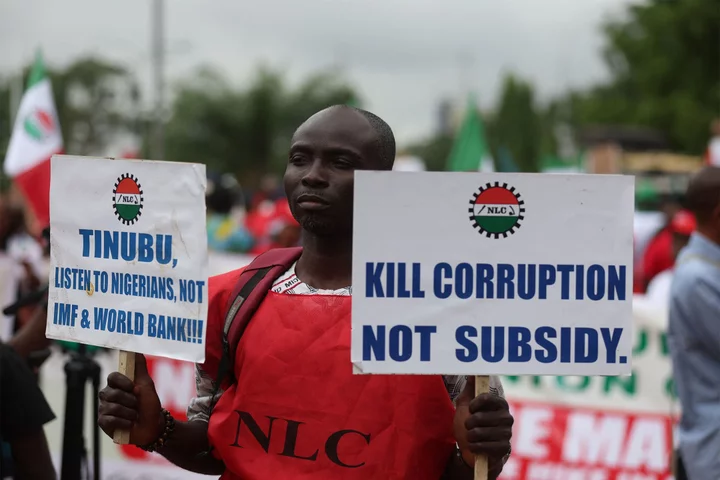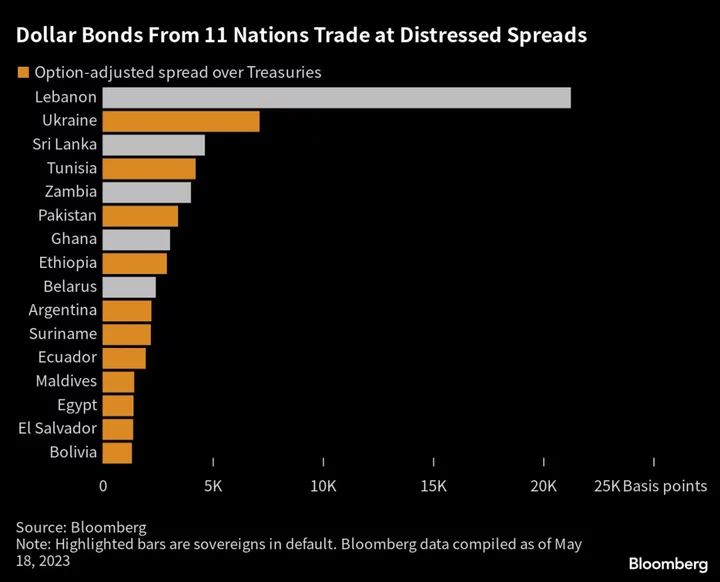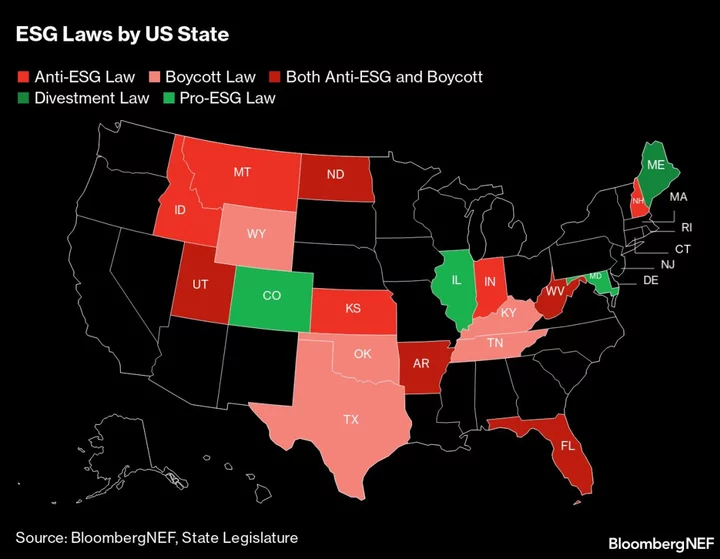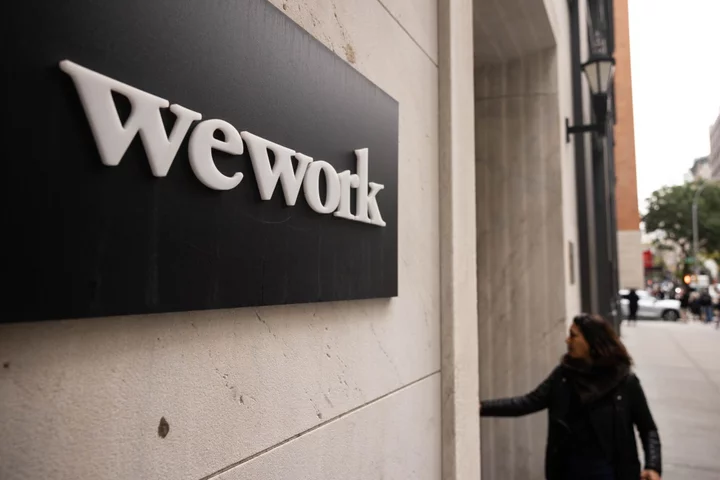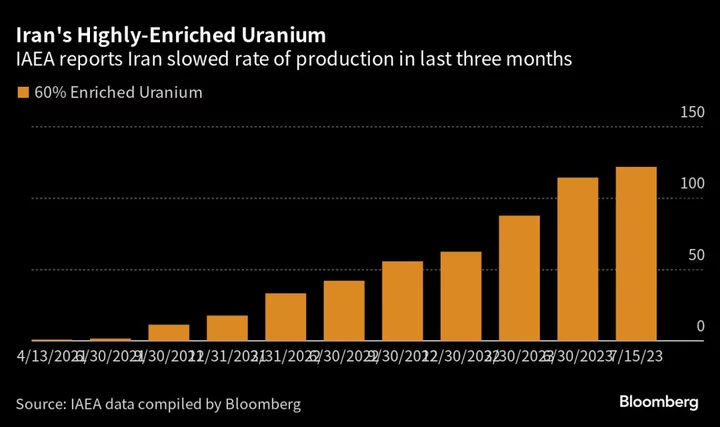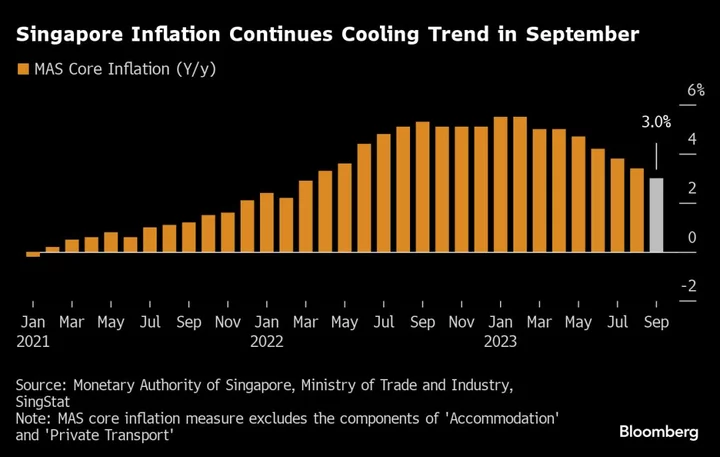Less than a year after a debt crisis shook South Korea, concern is growing that souring lending at credit unions risks bringing back distress.
A branch of one of Korea’s biggest such lenders, MG Community Credit Cooperatives, was shut last month when it reported a 60 billion won ($45 million) loss on real estate-related loans. That triggered deposit outflows at the group of lenders on concerns over rising default rates.
And in a sign that more borrowers are finding it harder to repay debt with interest rates rising, MGCCC’s delinquency rates climbed to 6.18% in late June from 3.59% at the end of last year, according to interior ministry data. Meanwhile, spreads on three-year won debt of a class of lenders have widened near a four-month high hit in July.
Korea’s credit troubles reflect broader woes from the US to Europe to Southeast Asia as central banks rushed to raise interest rates to tame surging inflation. That increased the cost for borrowers to refinance debt they piled up during real estate booms when money was cheaper. In China, a property debt crisis is deepening as it heads into a fourth year after officials moved to rein in excessive borrowing. Globally, pessimism toward the real estate market threatens to obstruct investments that fuel economic growth.
Policymakers in Korea acted to prevent the credit union troubles from spreading, with the central bank and Yoon Suk Yeol’s government making more than $100 billion worth of funds available to the credit and property markets. That helped stabilize investor sentiment, but the recent widening in some lenders’ credit yields is a sign of lingering concern.
The run on some credit cooperatives “represents a complete failure by the government and financial regulators to monitor their credit risks,” said Park Sunyoung, an associate economics professor at Seoul’s Dongguk University. “MGCCC probably has the highest risk of a failure related to project financing as a result of its rapid increase in loans during the 2020 peak of the property boom,” she said.
MGCCC expects its delinquency rate to drop in the September-November period because it’s selling loans to professional debt collection companies, and is tightening the loan qualification review, said Lee Tal Ho, spokesman for Korean Federation of Community Credit Cooperatives, which oversees the lenders.
The firms had made 56.4 trillion won of real estate-related loans and 15.8 trillion won of project-finance debt as of January, out of a total 201 trillion won it has lent, according to government and Bank of Korea data. Investors are watching whether the project-finance loans are repaid because funding difficulties due to rising rates and a weak real estate market sparked a 2022 crisis when the developer of a Legoland theme park missed a payment on securities linked to such debt.
The sheer size of the lenders elevates risks: more than 1,200 of their branches dot the landscape and over 40% of Korea’s population use their services each year, according to the interior ministry, which supervises the firms. Their total assets have nearly tripled in the past decade to 284 trillion won last year, as tax benefits and higher interest rates than bank deposits lured investors.
The MGCCCs are almost in the same league size-wise as some of the nation’s biggest banks: they had 260 trillion won of deposits as of June, compared with 380 trillion won at KB Kookmin Bank, BOK and KB data show.
The structure of the credit cooperatives may be adding to their problems: each branch stands as a separate legal entity, preventing troubles at one branch from bringing down the whole system, but that wouldn’t stop customers from pulling their deposits if they become worried about what’s happening at other branches.
The government has sought reform in the past, citing instances of embezzlement and a lack of proper oversight and governance, according to the interior ministry. It didn’t brighten investors’ mood that prosecutors requested a warrant to arrest Park Cha-hoon, head of the de facto central bank for the credit unions, over bribery allegations, though a Seoul court rejected the request.
The tale of MG Community Credit Cooperatives is intertwined with recovery from the Korean War. The first lender was established in 1963 in a farming village in the southeast called Hadun. The village’s oldest man worked with a 23-year-old partner to get the project off the ground, spending several evenings after farm work instructing locals on how the lender would function, according to its web page. MG is an abbreviation of Korean words meaning ‘new village bank vault.’
The mission of rebuilding war-torn regional economies through hard work and self-reliance soon got the attention of the military junta led by Park Chung-hee, whose policy goals included winning the race with North Korea to revive their economies.
Policymakers wrote laws to authorize the firms to take deposits and offer loans, and set up headquarters in Seoul to support the expansion of their lending and insurance operations. MGCCCs financed projects such as nurseries, arts and sports centers. as well as backing working-class families and mom-and-pop stores.
The firms continued to prosper after the military junta collapsed to make way for democratic elections in the 1980s. They now have almost 30,000 employees, making them one of the nation’s biggest employers.
Korea’s support for the firms reflect concern that another credit crisis may cause pain for households, who are some of the world’s most heavily indebted. They also hold a big portion of their assets in non-financial products such as real estate, making up 64.4% of the total as of 2021, more than the US’s 28.5% and 37% in Japan as of 2020, according to Korea Financial Investment Association data.
‘Jeonse’ Complications
Most Koreans’ real estate holdings are funded by loans with floating rates, threatening more delinquencies if interest rates rise further. Korea also has a rental practice called jeonse in which tenants provide landlords with lump-sum deposits that are often invested back into properties, risking an inability to repay if real estate prices slump.
Korea has the developed world’s highest household debt-to-gross domestic product ratio at 157% if the about $800 billion in jeonse is counted.
Policymakers took action to reassure investors after a MGCCC branch was shut. The BOK beefed up its contingency measures for the financial industry on July 27, making about 190 trillion won available in emergency support if needed against potential runs on banks occurring online.
The Yoon government unwound a range of regulations set by the previous administration against property speculation and rolled out a 40 trillion won loan program for potential home buyers.
Believe the Government
Kim Joo-hyun, a top financial regulator, even rushed to a Seoul branch to deposit the equivalent of $46,000 of his own in an account, to assure customers of the health of the lenders.
“Don’t believe YouTube, believe the government,” Kim said at a news conference.
The steps have helped lift housing prices in more posh neighborhoods in Seoul, and the up-tick is spreading to other parts of the country. That’s starting to worry BOK members that household debt may climb further from already record levels, according to minutes of their July 13 meeting where the group decided to hold interest rates steady partly on concerns about MGCCC.
“A crucial moment for the BOK is coming,” said Yoon Yeo-sam, an analyst at Meritz Securities Co. in Seoul. “They should play the role of keeping the government in check and warn about increases in household debt lest their efforts to contain risks lead to more moral hazard and project-finance loans.”
--With assistance from Whanwoong Choi.


